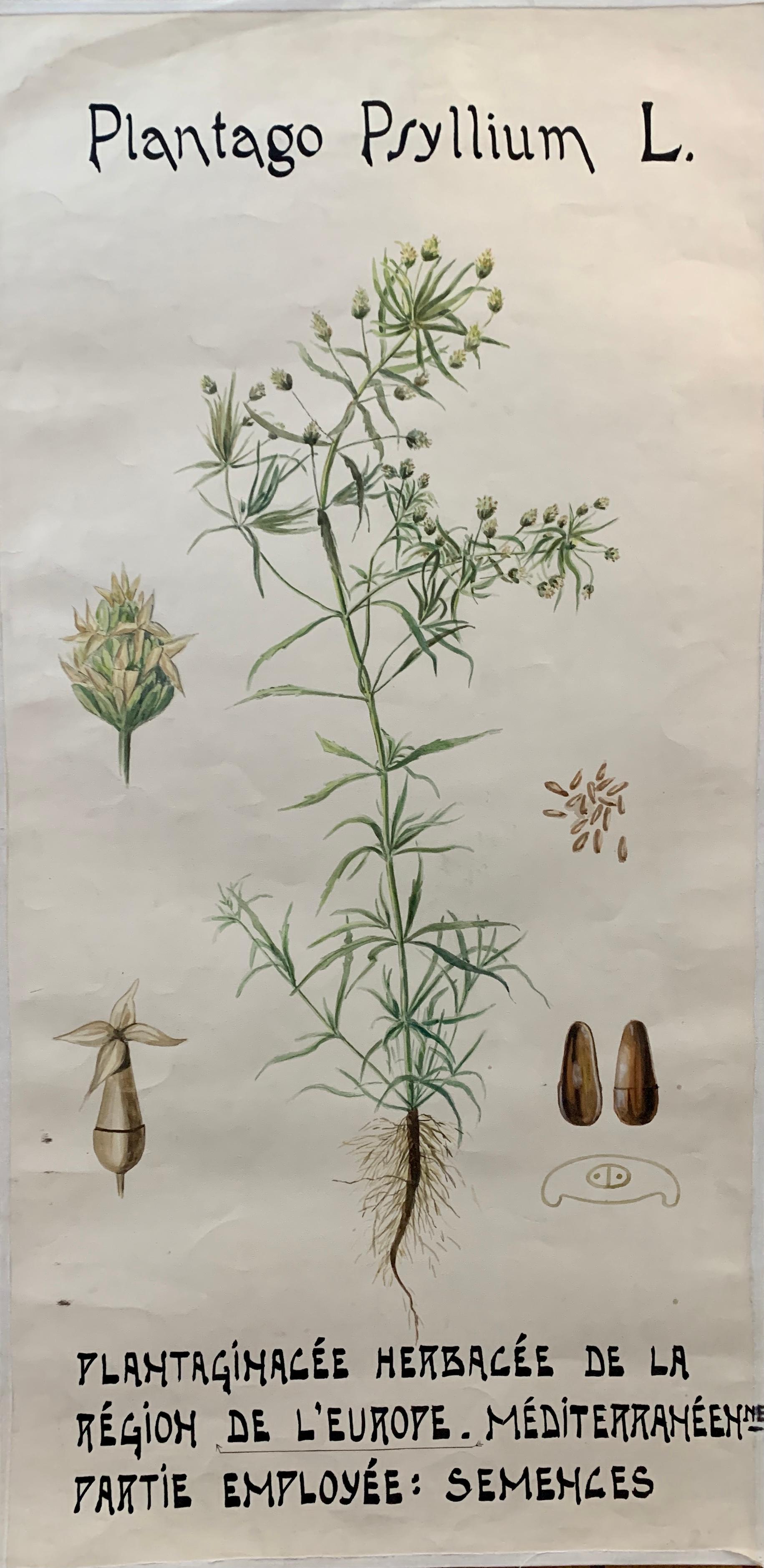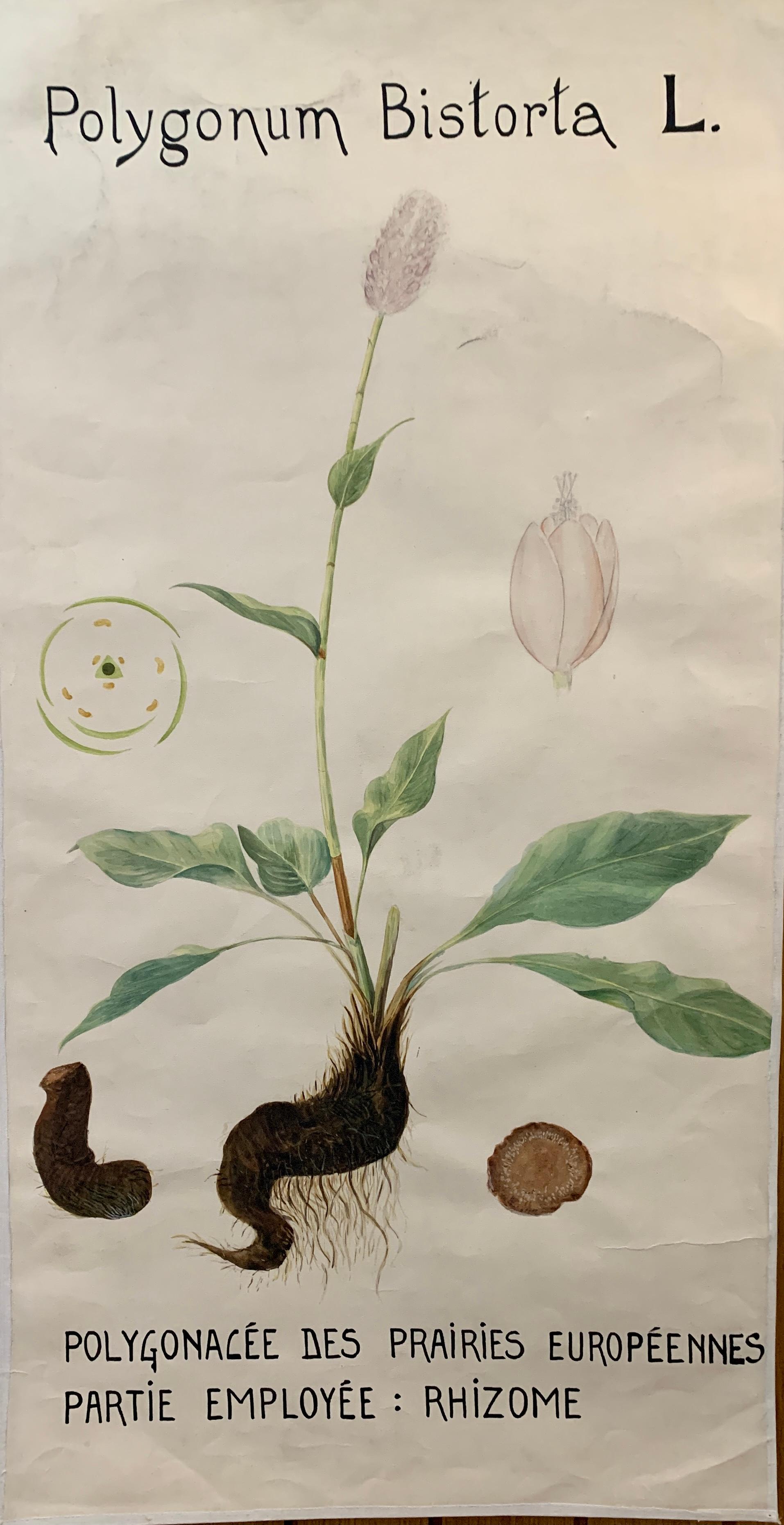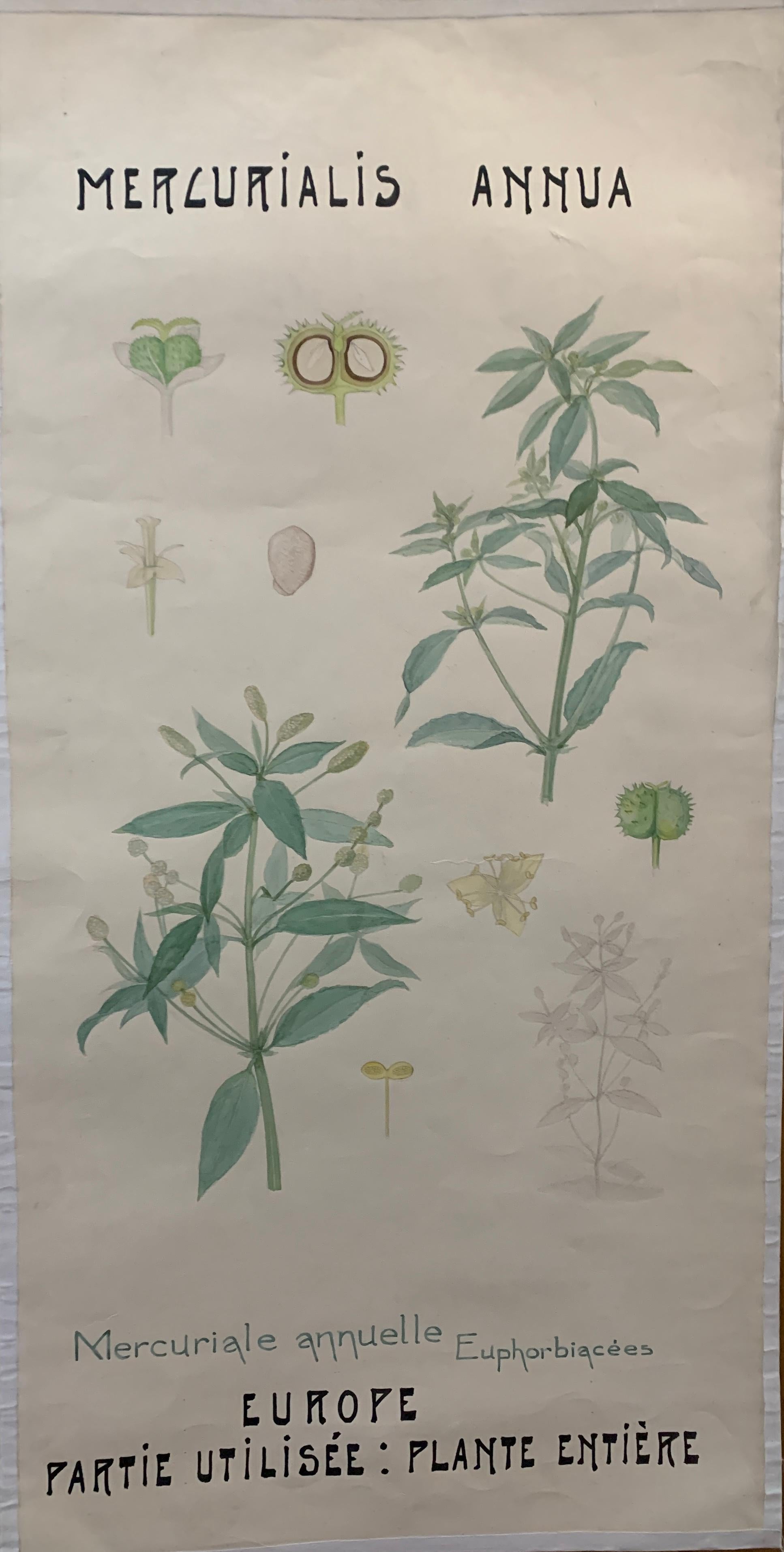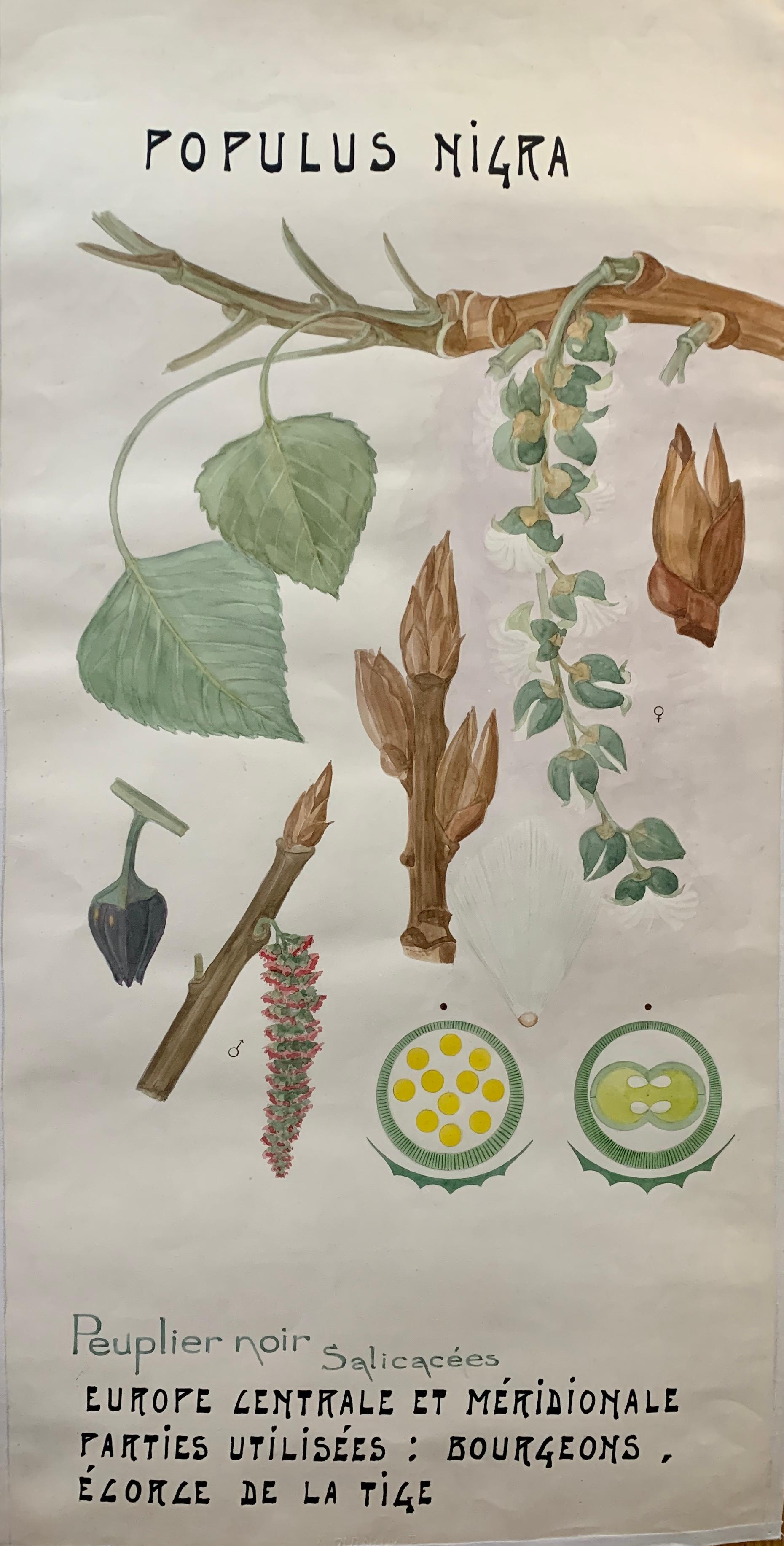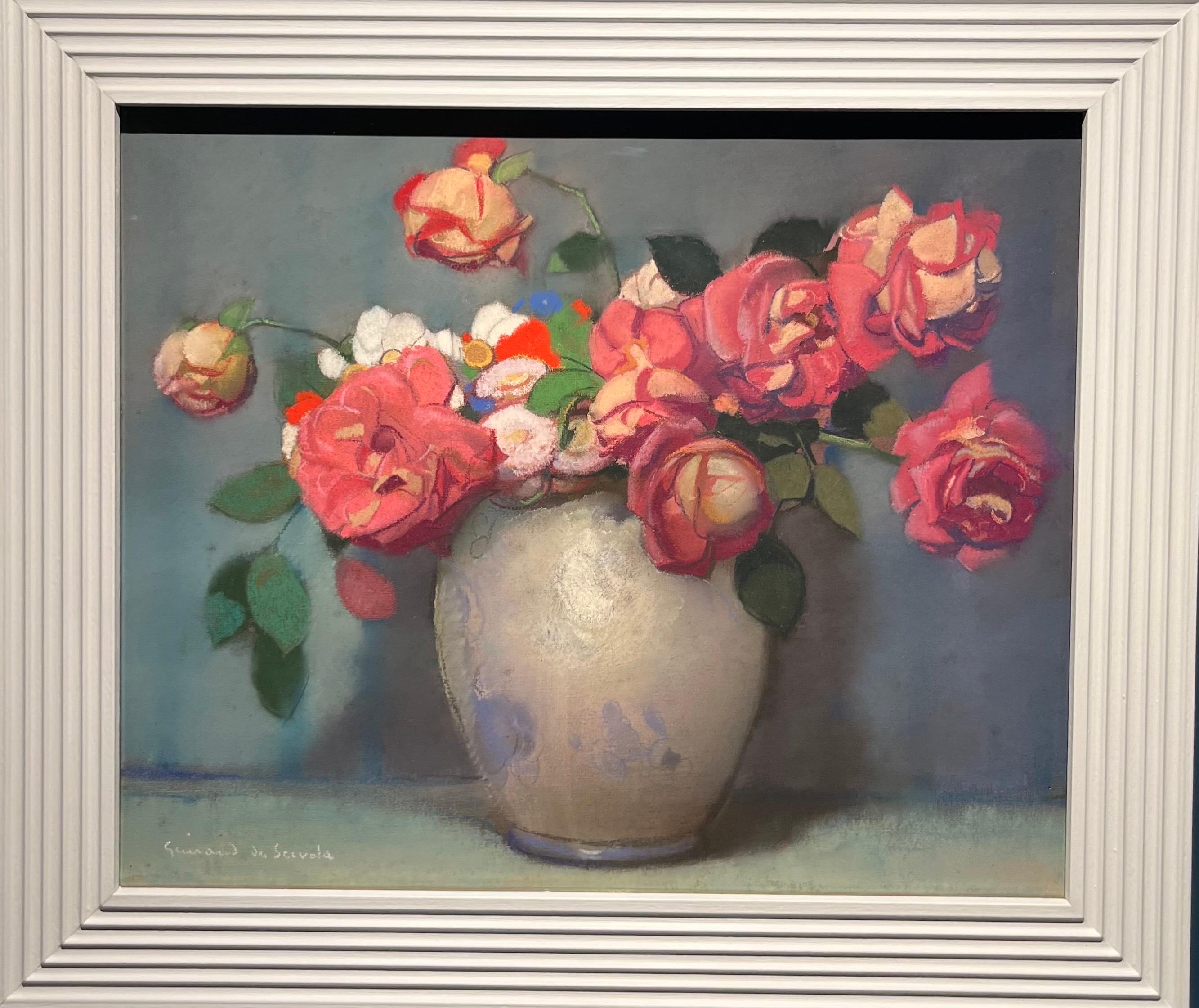Items Similar to c. 1920 Otto Münch Watercolor Flower Study
Want more images or videos?
Request additional images or videos from the seller
1 of 9
Otto Munchc. 1920 Otto Münch Watercolor Flower Studyc. 1920
c. 1920
About the Item
Otto Münch (German-American, 1885-1965)
Design for Teacups, c. 1920
Watercolor on paper
9 1/8 in. diameter
Frame: 16 7/8 x 16 7/8 x 1 in.
Provenance:
Chamberlin Gallery, New York
Otto Münch (1885–1965) was a German artist.
The bronze doors of the Grossmünster in Zürich, Switzerland, are considered to be his most important work. The reliefs on the south portal, showing Reformation scenes and other images of the history of the Grossmünster, were created in 1935–1938. The ones on the north portal, showing Biblical scenes, were finished in 1950. (Bio from Wikipedia)
The present watercolor are proposed tea cup designs executed by Münch around 1920.
- Creator:Otto Munch (1885 - 1965, German)
- Creation Year:c. 1920
- Dimensions:Height: 16.875 in (42.87 cm)Width: 16.875 in (42.87 cm)Depth: 1 in (2.54 cm)
- Medium:
- Movement & Style:
- Period:
- Condition:Frame needs cleaning; not examined outside of the frame.
- Gallery Location:Larchmont, NY
- Reference Number:1stDibs: LU2211213386212
About the Seller
5.0
Platinum Seller
These expertly vetted sellers are 1stDibs' most experienced sellers and are rated highest by our customers.
1stDibs seller since 2022
38 sales on 1stDibs
Typical response time: <1 hour
- ShippingRetrieving quote...Ships From: West Babylon, NY
- Return PolicyA return for this item may be initiated within 14 days of delivery.
More From This SellerView All
- Ross Bleckner Still Life DrawingBy Ross BlecknerLocated in Larchmont, NYRoss Bleckner (American, b. 1949) Untitled Graphite on Paper 13 3/4 x 11 in. Ross Bleckner grew up in Hewlett, Long Island, New York; drawing all the time without being aware that o...Category
1960s Contemporary Still-life Drawings and Watercolors
MaterialsGraphite, Paper
- At Dawn - Graphite Drawing by Robert KipnissBy Robert KipnissLocated in Larchmont, NYRobert Kipniss (American, b. 1931) At Dawn, 1975 Pencil on paper 10 1/2 x 7 1/4 in. Framed: 14 2/3 x 11 1/3 in. Signed upper right: Kipniss '75 Verso bears Hirschl & Adler Galleries Label Robert Kipniss, painter and printmaker, was born in New York City in 1931. He creates essentially monochromatic*, stylized vistas with natural and architectural elements intended to evoke an elegiac, nearly surrealistic mood in haunting, silent landscapes; the melancholy of nostalgia. Trees, in mid and far-distance, form clusters or act as misty individuals containing a haunted, indefinable presence, witnesses to the foreground drama of more specific shape, form and detail, often a close-up tree. Kipniss studied at the Art Students League* in 1947; Wittenberg University in Springfield, Ohio, 1948-50; and the University of Iowa, receiving a BA degree in English literature in 1952, and an MFA in painting and art history in 1954. The artist employs a meticulous technique combining a multiplicity of specific strokes, whether with brush, pencil or print-maker's needle and burin*, to create the essence of his generalized, non-specific forms. Light and darkness are clearly Kipniss' compositionally constructive elements. They also exist as contestants in the emotional drama at the heart of each work of art. The contrast, and sometimes combat, between these two opposites, symbolically represent with blackness -- ideas of threat, fear, trouble, evil; with whiteness safety, redemption, fulfillment and good. In Kipniss' 1995 mezzotint*, Clear Vase and Landscape, with a foreground image of precisely leafy stalks, the vase holding them, nearly invisible in its transparency, suggests an almost Salvador Dali-like surrealist device. This central image dominates but seems to invite association with, and commentary from, the surrounding clumps and individual round-topped, yet cedar-like trees. His mezzzotint, For Stella," 1997, depicts a gently twisting, curving, pale and smoothly-barked foreground, leafless tree limb or trunk, like a female human body, suggesting weakness, fatigue, an inability to deal with the staccato background screen of textured bush that seems to uncomfortably impinge upon it. This print is arguably a metaphor for a delicate soul struggling to overcome the prickly difficulties of domineering life. The classic mezzotint process, invented in the middle of the 17th Century, is the reverse of most of the other print-making media, since the artist works from a black ground to increasingly lighter areas. The copper plate is first roughened by a "rocker," creating a burr over the entire surface (the more burr left intact, the more ink it holds, the darker the final finished print). The artist, Robert Kipniss, in this instance, gradually burnishes, smoothes down the burr in varying degrees to produce the gradations of lights and darks of the final design. The deepest darks in the final picture are those areas on the plate that have been little touched after the initial roughening. Mezzotint relies on shade and tone rather than outline for its effect, which fits the Kipniss style of atmospheric* masses of value. A recent oil painting by Robert Kipniss, Hillside Silhouettes, 2001, 40 x 29, is somewhat more complex in composition than many, with four cubically-constructed houses each set in their own zones, seemingly unrelated to one another, with receding hills and similarly isolated, increasingly misty trees beyond. In his career, Robert Kipniss has had over 40 one-man shows since the first in New York in 1951, including an important retrospective exhibition at the Associated American Artist Gallery, New York in 1977. Many of these one-man exhibitions have been mounted by over 50 museums in the United States, South America and Europe, including the Chicago Art Institute, Metropolitan Museum of Art, Museum of Modem Art, Whitney Museum of American Art, Library of Congress and British Museum in London. Robert Kipniss is represented in the permanent collections of the institutions above, among many others, as well as the Philadelphia Museum of Art; New York Public Library; Museum of Fine Arts, Boston; Detroit Art Institute; Yale University Museum; National Collection of Fine Arts, Smithsonian Institution; Museum of Fine Arts, Houston; Los Angeles County Museum of Art; Portland Art Museum; and the New Orleans Museum of Art. He was elected to the National Academy of Design* in 1980, and to the Royal Society of Painter-Printmakers, London in 1998 Robert Kipniss can be referenced in numerous publications, including Who's Who in American Art from the 1950s to the present, and multiple reviews in periodicals like Art News, Art in America and Art Forum. There are also three important catalogues raisonne published on his work. Robert Kipniss has received many awards: 1965 - Ohio University National Drawing Show, Purchase Prize 1976 - National Academy of Design, New York City, The Ralph Fabri Prize 1978 - The Print Club of Philadelphia, Charles M Lea Prize 1979 - Charlotte Printmakers Society, Purchase Award 1979 - Society of American Graphic Artists, Printmaking Award 1979 - Wittenberg University, Springfield, OH, Honorary Doctorate 1980 - Elected to the National Academy of Design, New York City 1980 - Audubon Artists, New York City, Silver Medal 1980 - National Academy of Design, New York City, The Leo Meissner...Category
1970s American Realist Still-life Drawings and Watercolors
MaterialsPaper, Pencil
- Style of Arthur B. Davies, Art Nouveau Muses, Reverse Glass PaintingLocated in Larchmont, NYStyle of Arthur B. Davies Untitled (Muses), c. 1920 Reverse glass painting 19 x 24 in. Reverse glass painting is a form of art that consists of applying paint to a piece of glass t...Category
1920s Art Nouveau Nude Paintings
MaterialsGlass, Oil, Laid Paper
- Art Nouveau Ballerina Painting by Mystery European ArtistLocated in Larchmont, NYMystery European Artist Untitled, c. 20th Century Oil on canvas board 31 x 22 3/4 in. Framed: 36 1/4 x 28 x 1 1/2 in. Signed lower rightCategory
20th Century Art Nouveau Figurative Paintings
MaterialsCanvas, Oil, Board
- John Fincher Stallions WatercolorBy John FincherLocated in Larchmont, NYJohn Fincher (American, b. 1941) Physical Activities, c. Late 20th Century Watercolor and collage on paper Sight: 16 1/4 x 23 3/4 in. Framed: 22 x 30 1/4 x 1 3/8 in. Provenance: Th...Category
Late 20th Century Contemporary Animal Drawings and Watercolors
MaterialsPaper, Watercolor, Handmade Paper
- Chinese Company/Export School Fisherman PortraitLocated in Larchmont, NYMystery Artist Untitled (Chinese Company/Export School Portrait), c. 1900 Watercolor on paper Sight: 19 x 9 1/4 in. Framed: 22 5/8 x 12 1/4 x 3/4 in. Portraits such as this were cre...Category
Early 20th Century Folk Art Portrait Drawings and Watercolors
MaterialsPaper, Watercolor
You May Also Like
- Early 20th C French Watercolor, botanical flowers from an University collectionLocated in Woodbury, CTWonderful watercolor depicting a plant/flower. These were used at a Belgium University to teach the students about botany. Dating from the early 20th century...Category
Early 1900s Art Nouveau Still-life Paintings
MaterialsWatercolor
- Early 20th C French Watercolor, botanical flowers from an University collectionLocated in Woodbury, CTWonderful watercolor depicting a plant/flower. These were used at a Belgium University to teach the students about botany. Dating from the early 20th century. They are watercolor on ...Category
Early 1900s Art Nouveau Still-life Paintings
MaterialsWatercolor
- Early 20th C French Watercolor, botanical flowers from an University collectionLocated in Woodbury, CTWonderful watercolor depicting a plant/flower. These were used at a Belgium University to teach the students about botany. Dating from the early 20th century. They are watercolor on ...Category
Early 1900s Art Nouveau Still-life Paintings
MaterialsWatercolor
- Early 20th C French Watercolor, botanical flowers from an University collectionLocated in Woodbury, CTWonderful watercolor depicting a plant/flower. These were used at a Belgium University to teach the students about botany. Dating from the early 20th century. They are watercolor on ...Category
Early 1900s Art Nouveau Still-life Paintings
MaterialsWatercolor
- Early 20th C French Watercolor, botanical flowers from an University collectionLocated in Woodbury, CTWonderful watercolor depicting a plant/flower. These were used at a Belgium University to teach the students about botany. Dating from the early 20th century. They are watercolor on ...Category
Early 1900s Art Nouveau Still-life Paintings
MaterialsWatercolor
- "Bouquet de fleurs" Pastello cm. 36 x 45 1910 caBy Lucien-Victor Guirand de ScévolaLocated in Torino, ITEccezionale Pastello Liberty , colori luminosi, bellissima cornice decò Lucien Victor GUIRAND DE SCÉVOLA (Sète, 1871 – Parigi, 1950) È allievo ...Category
1910s Jugendstil Still-life Drawings and Watercolors
MaterialsPaper, Crayon
Recently Viewed
View AllMore Ways To Browse
Gary Indiana Love
Jeanette P
Joanna Bird
Michael Chen
Peter M Adams
1997 Andy Warhol Chanel Blue Lithograph
Baron And Edmund
Juniper Briggs
Keith Haring 1984 Tony Shafrazi Gallery Poster
30 Bones Of My Body Portfolio
Fabrice Hyber
Final Fantasy Iv
Grayson Perry Piggy
Kaws Circle
Kenzo 1987
League Of Women Voters
Miriam Had Gadya
Olivia Hill
